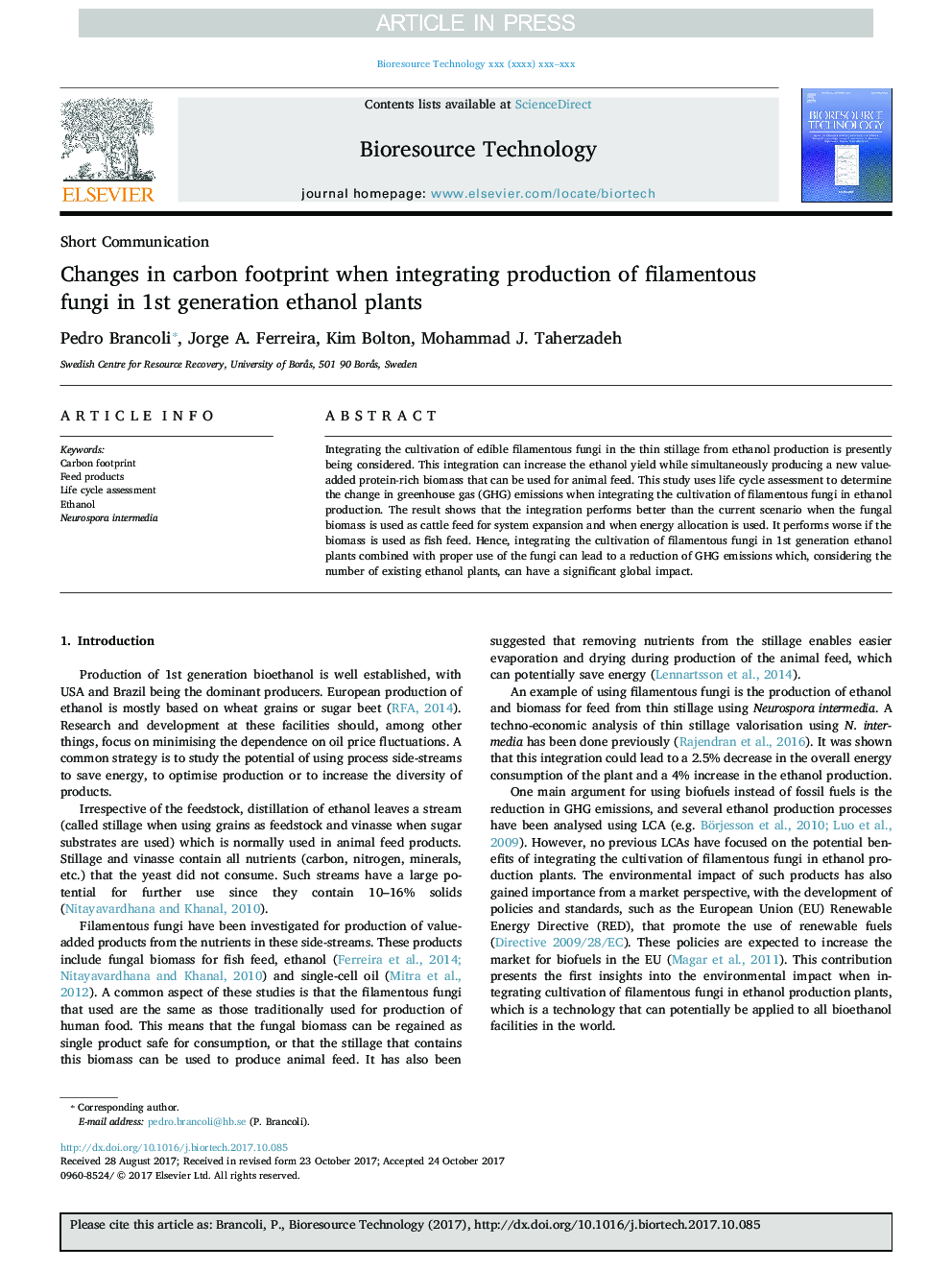| Article ID | Journal | Published Year | Pages | File Type |
|---|---|---|---|---|
| 7068946 | Bioresource Technology | 2018 | 5 Pages |
Abstract
Integrating the cultivation of edible filamentous fungi in the thin stillage from ethanol production is presently being considered. This integration can increase the ethanol yield while simultaneously producing a new value-added protein-rich biomass that can be used for animal feed. This study uses life cycle assessment to determine the change in greenhouse gas (GHG) emissions when integrating the cultivation of filamentous fungi in ethanol production. The result shows that the integration performs better than the current scenario when the fungal biomass is used as cattle feed for system expansion and when energy allocation is used. It performs worse if the biomass is used as fish feed. Hence, integrating the cultivation of filamentous fungi in 1st generation ethanol plants combined with proper use of the fungi can lead to a reduction of GHG emissions which, considering the number of existing ethanol plants, can have a significant global impact.
Related Topics
Physical Sciences and Engineering
Chemical Engineering
Process Chemistry and Technology
Authors
Pedro Brancoli, Jorge A. Ferreira, Kim Bolton, Mohammad J. Taherzadeh,
